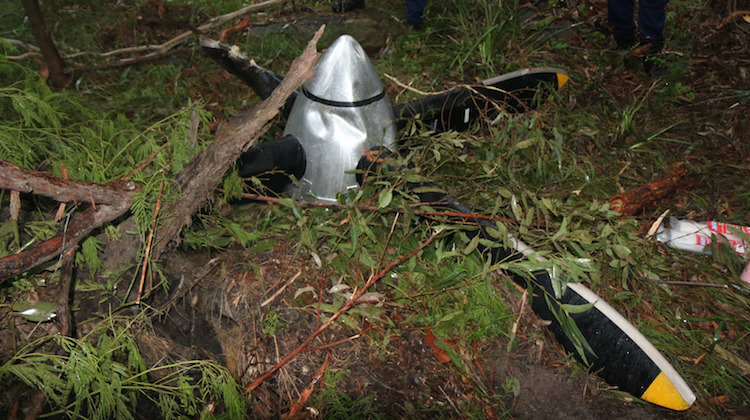
The Australian Transport Safety Bureau (ATSB) says its investigation into the Regional Express flight that lost a propeller en route to Sydney has found fatigue cracking that initiated in the engine’s propeller mounting flange.
Saab 340B VH-NRX was operating flight ZL768 on March 17 when its right propeller separated from the engine about 19km from Sydney. The aircraft was carrying 16 passengers and three crew and landed safely with all on board unharmed.
The propeller, which weighs about 100kg, was found in a national park about 18km from Sydney Airport in the city’s south-west.
The ATSB’s preliminary report into the investigation said the propeller shaft had fractured.
“The propeller was found with the flange section of the propeller shaft secured to the propeller assembly and a fracture through the propeller shaft,” the report said.
After removing the remaining propeller shaft and integral flange section, further examination at the ATSB’s facilities in Canberra showed “cracking that appeared to run between the main shaft and the flange region”.
“The crack was found to be a fatigue fracture that had initiated within the propeller mounting flange, and then transitioned into the shaft section,” the ATSB report said.
“The crack originated at the bore of a dowel pin near the forward face of the propeller hub flange. The dowel pin bore was corroded in parts and corrosion pitting was found near the fracture.”
The report said further work was ongoing to determine whether corrosion or other factors contributed to the fracture initiation.


The ATSB report said the flightcrew noticed “uncommanded engine indications” about 55nm south-west of Sydney Airport, at which time they began the necessary checklists.
“While undertaking the checklist items, the crew experienced minor vibrations from the right engine,” the report said.
“These vibrations worsened as the checklist progressed and became visually evident to the first officer. As a result the crew commenced the engine shutdown procedure.”
As the engine was being shut down, the propeller separated from the aircraft. The flightcrew then made a Pan-Pan call to air traffic control and completed the engine shutdown procedure.
ATSB chief commissioner Greg Hood said the ATSB was working closely with the Civil Aviation Safety Authority (CASA), Saab, engine manufacturer GE Aviation and Regional Express as part of the investigation.
“This is the first known critical failure of this type, initiating within the propeller hub flange of the GE Aviation CT7-9B engine,” Hood said.
“Both the operator and the engine manufacturer have already taken proactive safety action in response to the ATSB’s safety advisory notice.
Further, he said GE Aviation was conducting metallurgical analysis on the propeller flange and hardware, as well as inspecting additional propeller gearboxes and reminding all operators to follow maintenance and inspection procedures.
Following the incident Rex withdrew five aircraft with propeller gearboxes and shafts of the same series as that of VH-NRX as a precautionary measure. The aircraft would have their propeller gearboxes and shafts replaced.











